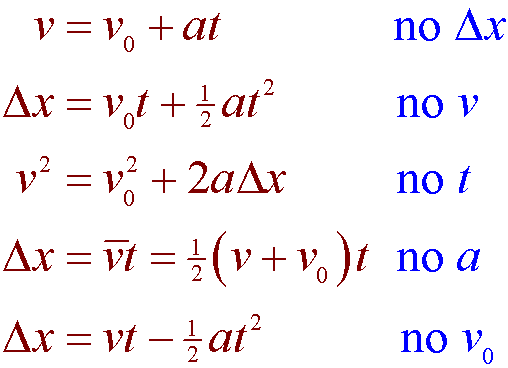Simple Kinematic Equation For Acceleration

I think this is what you probably intended to begin with though.
Kinematic equation for acceleration. This is an instructional video that illustrates and discusses the derivation of the kinematic equations for particles objects moving in one dimension under. The kinematic formula Δ x V0 t at2 is missing v And its the best choice to solve the acceleration in this situation. What are the Kinematic Equations.
The equations can be utilized for any motion that can be described as being either a constant velocity motion an acceleration of 0 mss or a constant acceleration motion. Shows you how to use the kinematic equations to solve for the acceleration of an object. Because kinematics equations are used when the acceleration of the object is constant we can use a simple equation to determine the average velocity of an object.
First Equation Of Motion. 2 Sketch graphs of the x-component of the position velocity and acceleration of the sports car as a function of time for t 0 a xtAtBt3for0. They can never be used over any time period during which the acceleration is changing.
In other words a quantity like changes in time but you want to use the initial velocity only. By using the relationships arα vrω and xrθ we derive all the other kinematic equations for rotational motion under constant acceleration. The kinematic equations are a set of four equations that can be utilized to predict unknown information about an objects motion if other information is known.
This equation can only be used when acceleration is constant. ω ω0αt θ ω0t 1 2αt2 ω2 ω2 02αθ ω ω 0 α t θ ω 0 t 1 2 α t 2 ω 2 ω 0 2 2 α θ. Instead of differentiating velocity to find acceleration integrate acceleration to find velocity.
As you may know there are two main equations of motion for uniform acceleration Thus we have five motion parameters. Instead for constant acceleration you need. Original velocity the velocity at the start of the acceleration.













